The Australian Treasury’s Orwellian Centre for Population released its 2024 Population Statement, which forecast that ongoing high immigration will add 4.1 million residents over the next 10 years—most of whom will live in Sydney, Melbourne, Brisbane, and Perth.
“Australia’s population is projected to grow from 27.1 million people in March 2024 to 31.3 million people by 2034–35. This is slightly higher than projected in last year’s Population Statement”.
Over the decade to 2034, Melbourne’s population is projected to balloon by one million people to 6.5 million, whereas Sydney’s is projected to swell by 900,000 people to 6.5 million.
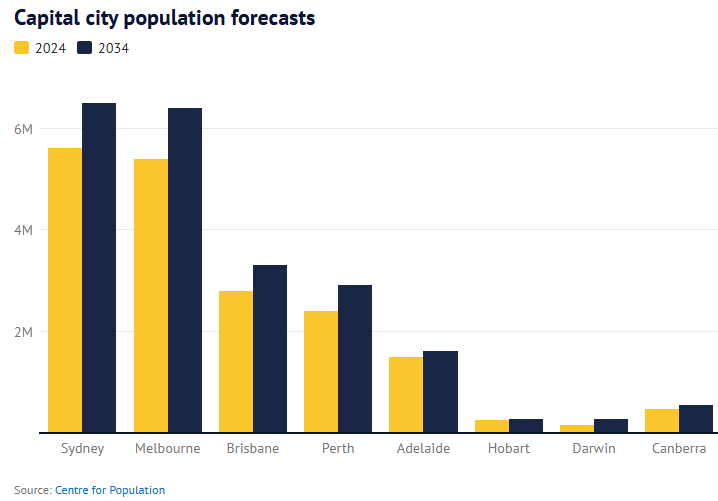
Brisbane’s population is projected to balloon by 500,000 to 3.3 million, whereas Perth’s population is projected to swell by 500,000 to 2.9 million.
According to AMP chief economist, Australia already has a housing shortage of more than 200,000 dwellings.
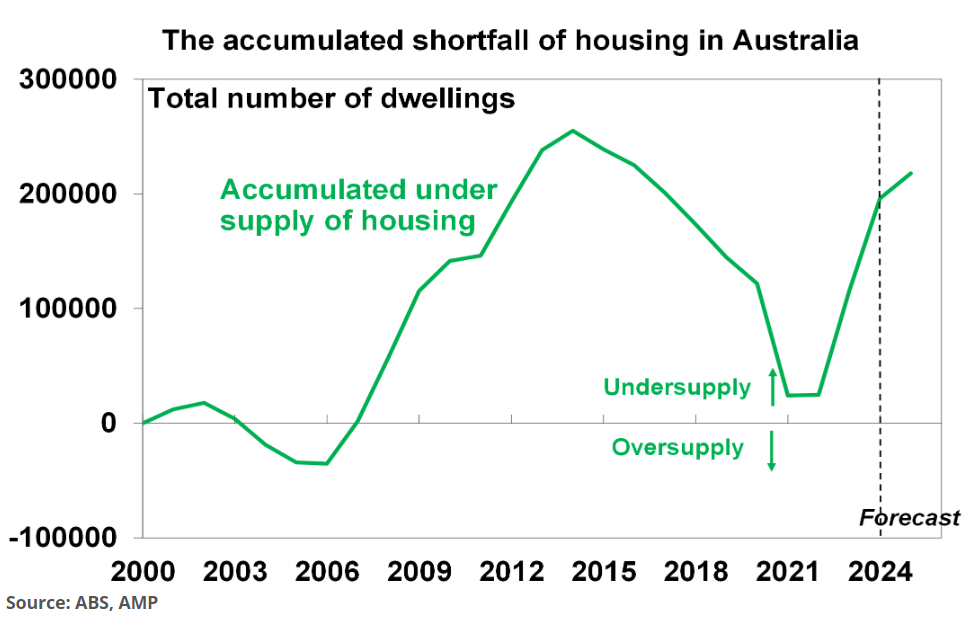
Such rapid population expansion, driven almost entirely by continued strong net overseas migration, will inevitably worsen housing and infrastructure shortages.
As usual, independent economist Tarric Brooker nailed the implications for housing with the following Tweet:

The Motley Fool’s Scott Phillips also ridiculed the population projections, noting that Australia is already desperately undersupplied with housing, infrastructure, and water.
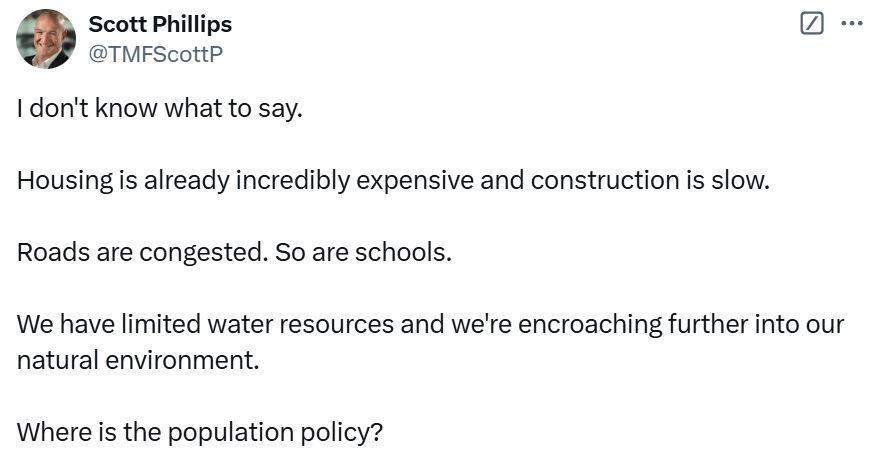
The Centre for Population also admitted that its past forecasting has been woeful, continually underestimating net overseas migration and population growth.
“Previous population statements consistently underestimated post-pandemic growth rates (Chart 55). The forecast errors were particularly large for 2022–23 in the first 3 population statements, at 1.6 percentage points in the 2020 Statement, 1.3 percentage points in the 2021 Statement, and 1.1 percentage points in the 2022 Statement”.
“Many other population projections prepared during and after the pandemic also underestimated population growth, as they did not anticipate the sharp recovery in NOM”.
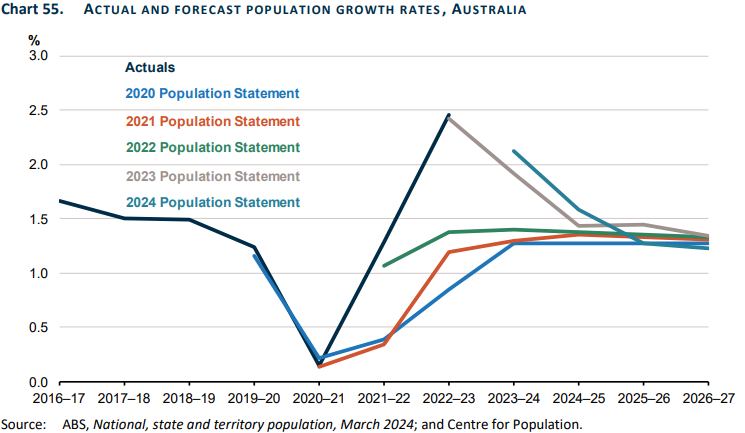
The Centre for Population blatantly falsely asserted that Australia’s mass immigration policy had positive wage and productivity benefits.
“Australians benefit from migration through higher economic growth, more job creation, improved wages and productivity. There can also be fiscal benefits to migration”.
Where is the evidence that Australia’s mass immigration policy helps to lift productivity and wages? Because the actual empirical evidence says the opposite.
Australia’s per capita GDP growth and labour productivity tanked after immigration was more than doubled in the mid-2000s.
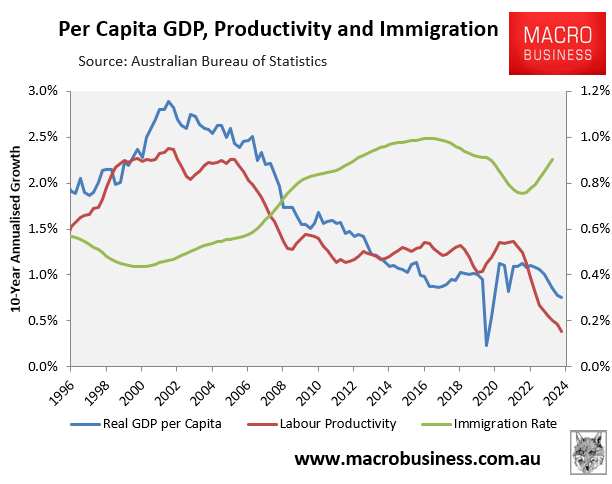
Leading economist Gerard Minack also proved recently that Australia’s productivity has suffered from ‘capital shallowing’ caused by excessive levels of immigration.
Minack wrote that Australia’s “net investment spending (investment net of depreciation) is running at levels previously only seen at the nadir of the 1990s recession”.
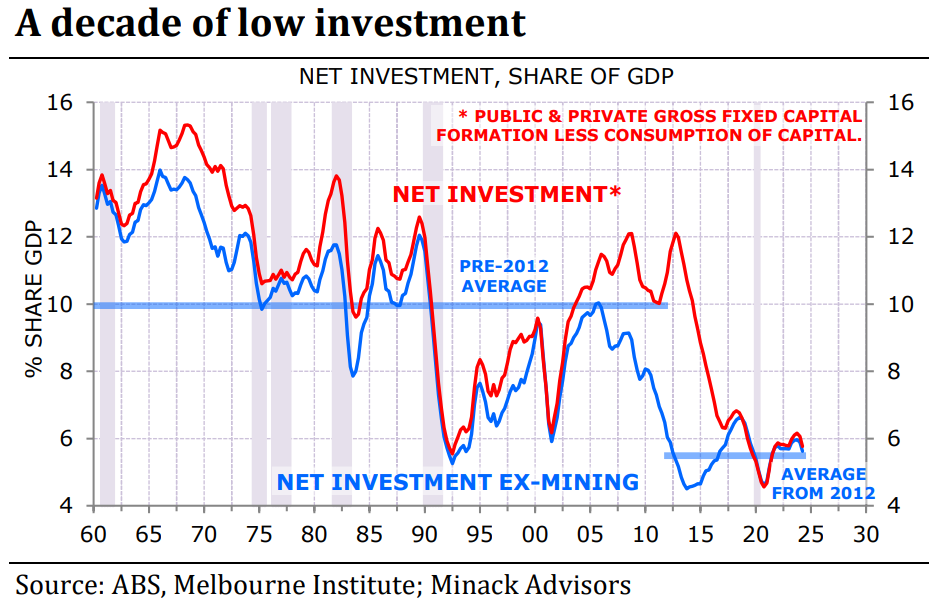
This “investment spending has been stretched thin by population growth”.
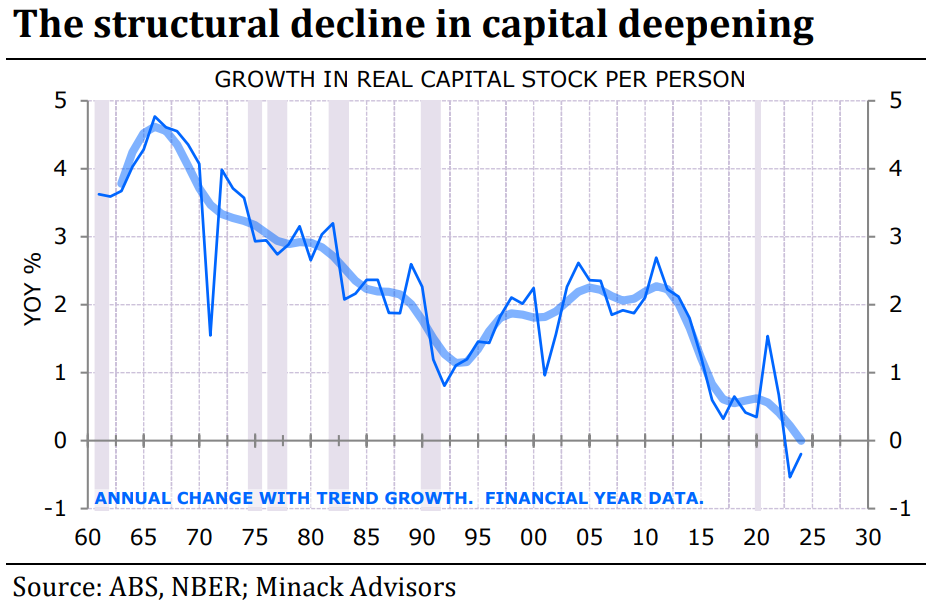
“The fast population growth of the past 20 years, combined with the decline in investment spending over the past decade, has led to a collapse in the growth of per capita capital stock”.
“Less deepening means less productivity growth”, noted Minack.
“Low investment and fast population growth is crushing productivity growth leading to structurally weak income growth”.
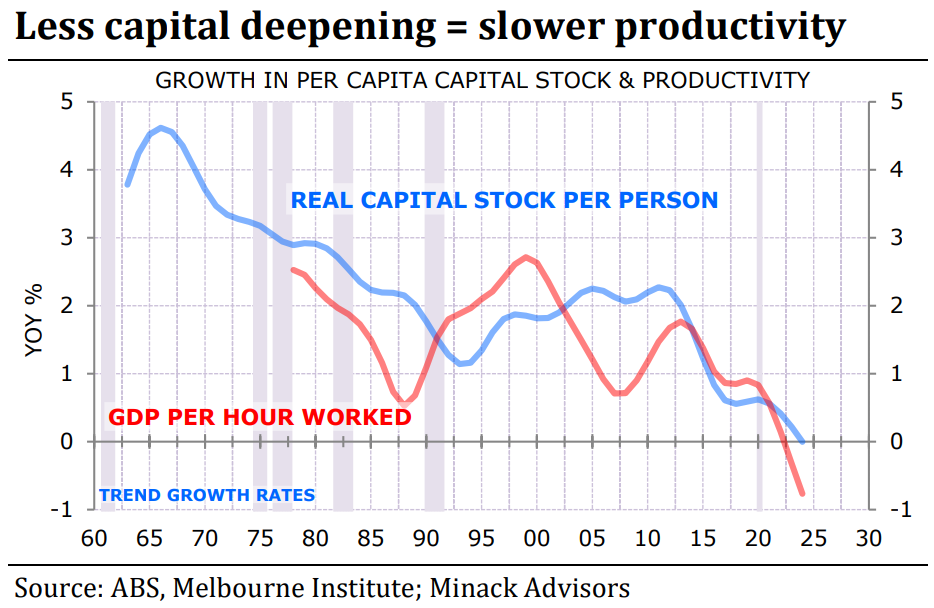
Therefore, Australia has been caught in a productivity trap because the federal government has run a persistently high migration policy over business, infrastructure, and housing investment.
The Orwellian Center for Population is clearly a propaganda unit designed to promote excessively high levels of immigration against the direct will of the Australian people.

